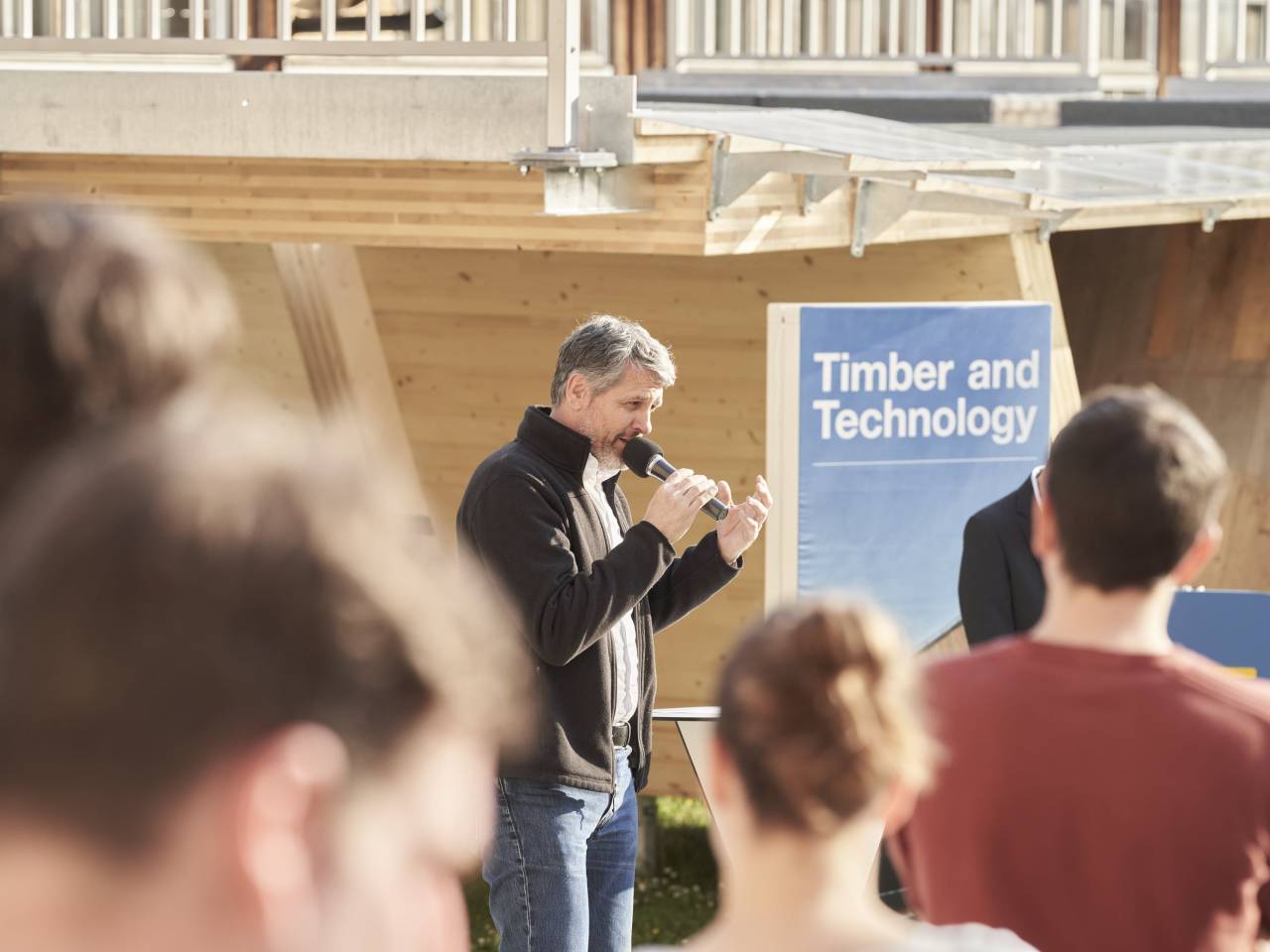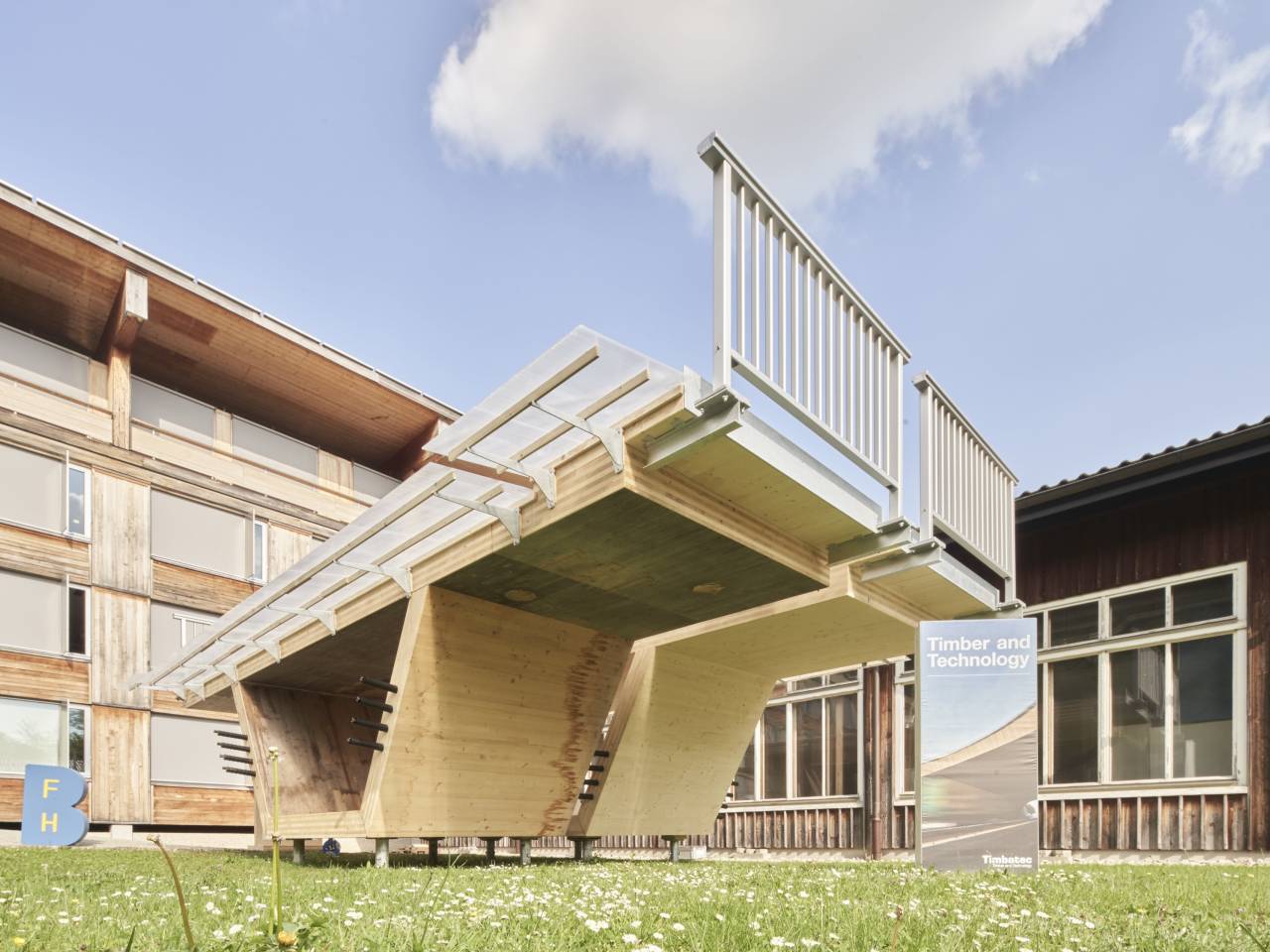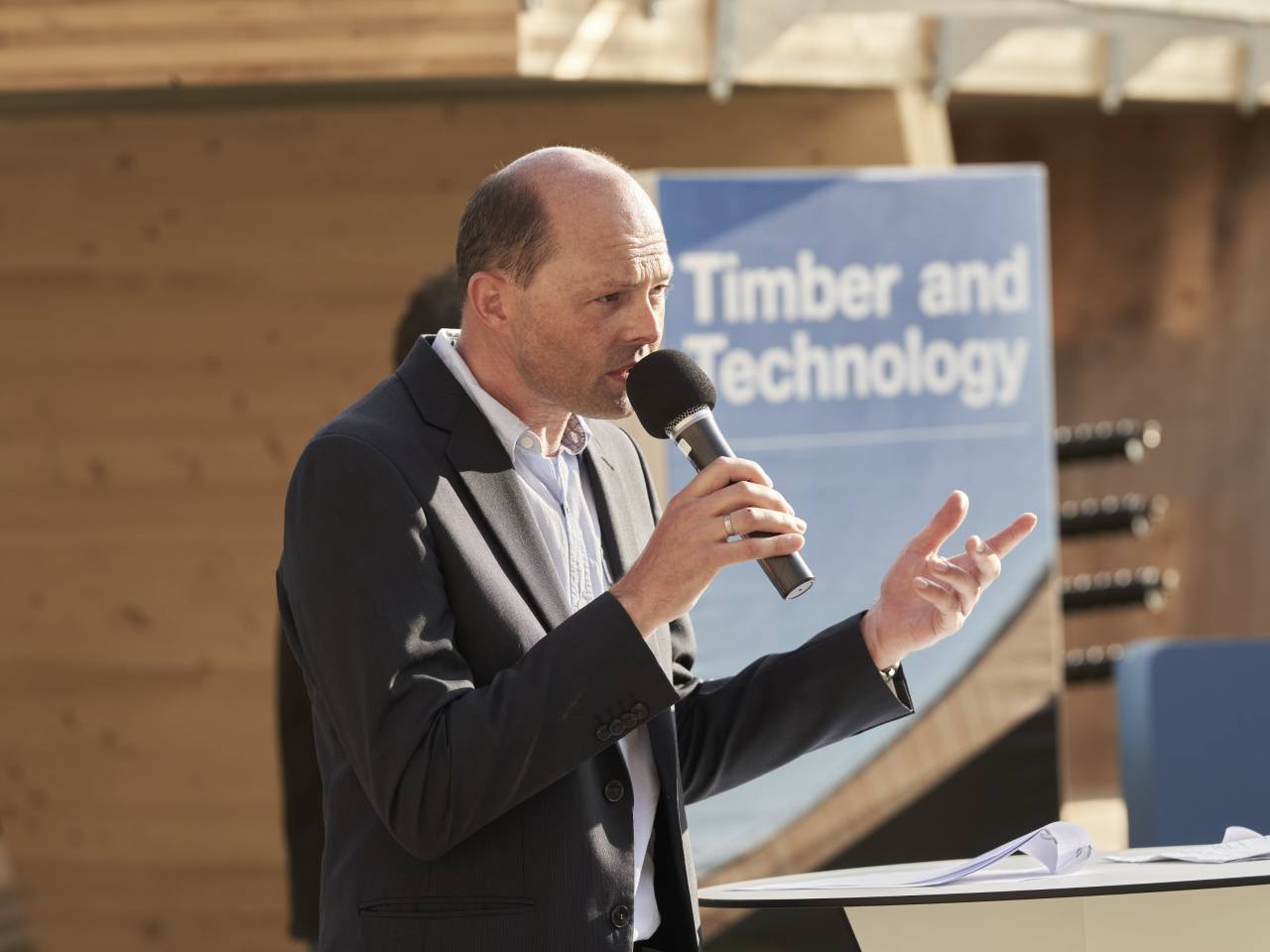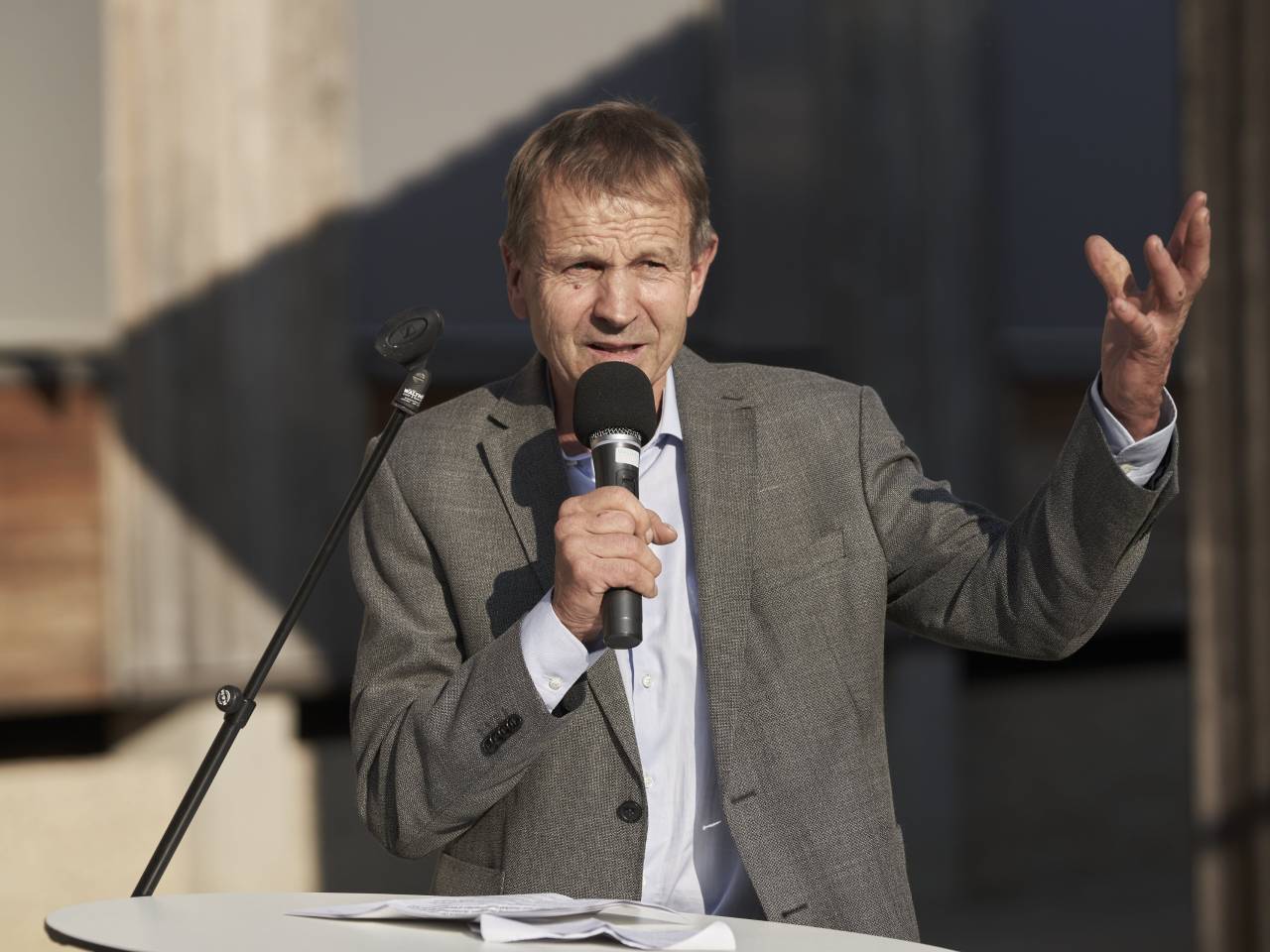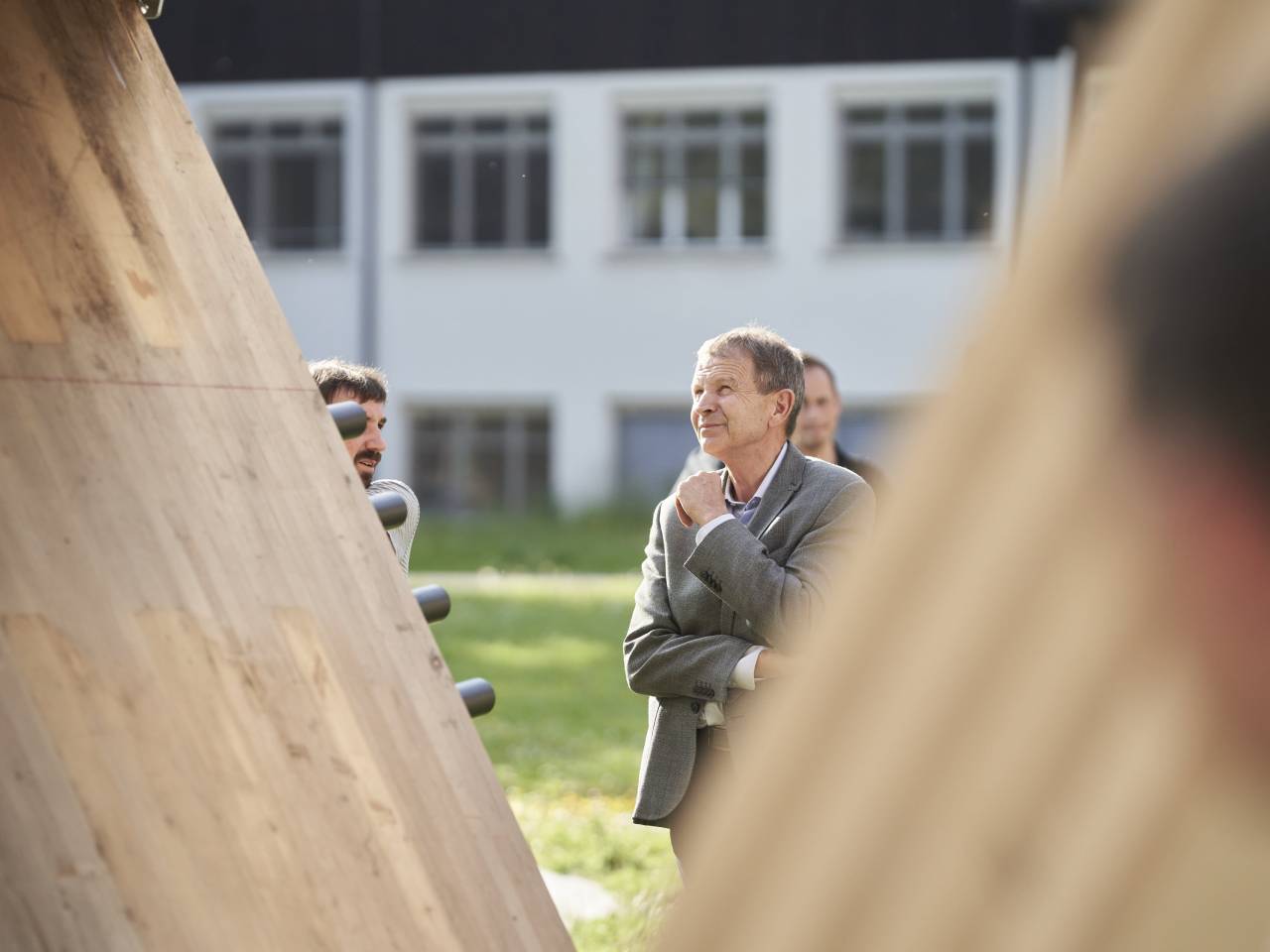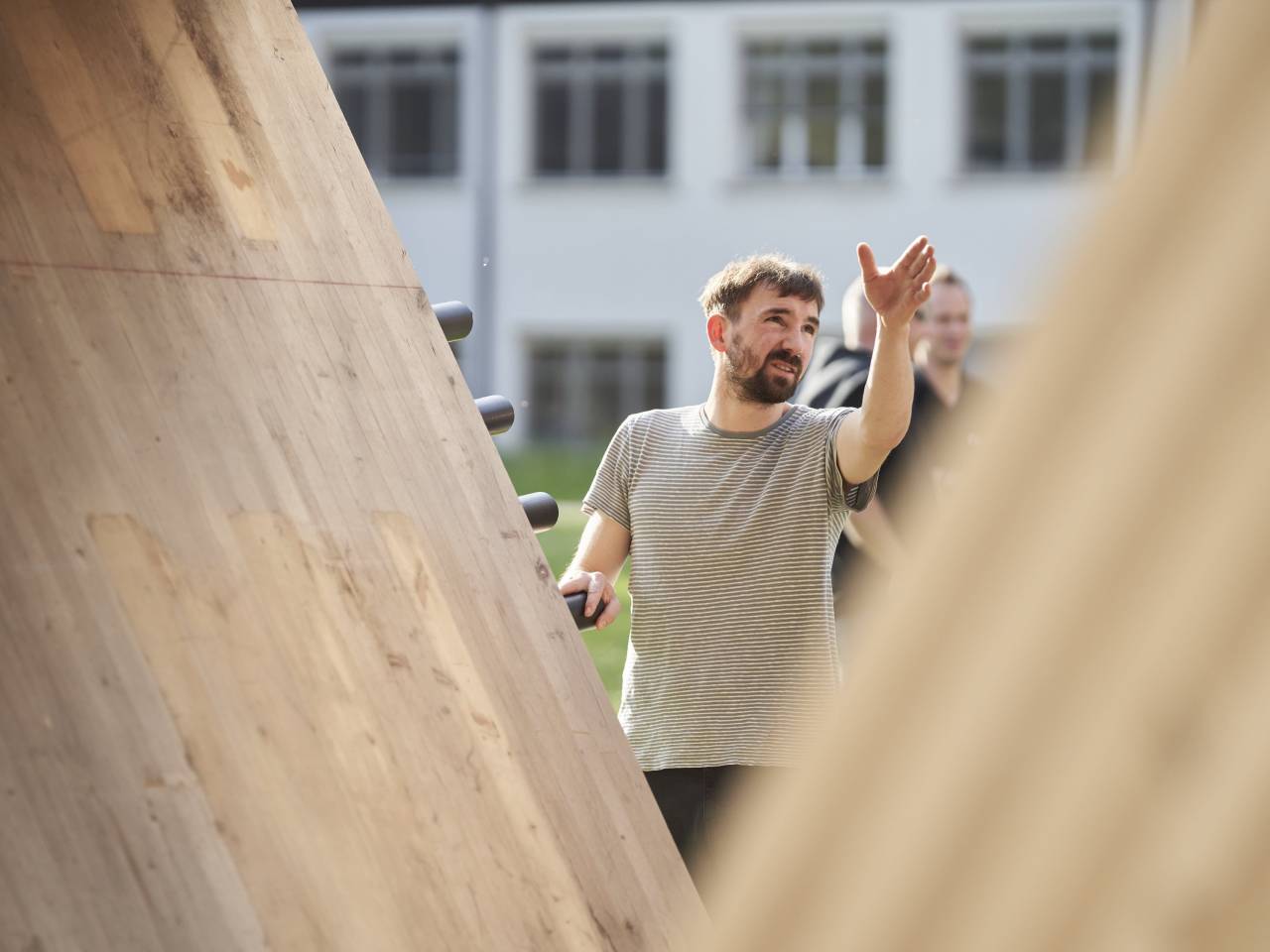Heavy duty wooden bridges
10. Mai 2022
Infrastructure construction is one of the largest CO₂ emitters in Switzerland. Through the increased use of wood, it could contribute to decarbonization. On Monday 09 May, a prestressed box girder element for heavy-duty bridges will be inaugurated at the Bern University of Applied Sciences. We cordially invite you to the inauguration.
The motion "Research and innovation of wood as a material for use in infrastructure construction as a contribution to decarbonization" was adopted in the Council of States and the National Council (Read more).
The task now is to replace reinforced concrete with CO₂-storing materials such as wood in infrastructure construction. To this end, the Bern University of Applied Sciences, together with TS3 and other business partners, has developed a research strategy and built a prototype bridge element. The module was inaugurated during the international bridge conference ICTB. Here are some impressions of the inauguration.
Wood in infrastructure construction
With annual CO₂ emissions of around 2.5 million tons, cement production contributes over 5 percent to national CO₂ emissions. If the Paris climate agreement is to be achieved, then the construction industry must largely abandon the use of reinforced concrete. For the construction of infrastructures, in the building sector but also in other areas such as the road sector, various solutions are already available today with materials that do not produce CO₂ during manufacture but store it. One good example is wood.
The first promising applications for wood in infrastructure construction already exist. Built noise barriers, bridges and wildlife overpasses are good examples. Further research is needed so that large bridges can be built, especially bridges in the axis of the direction of travel.

Heavy-duty bridges made of wood
Under the direction of Prof. Dr. Steffen Franke, the Bern University of Applied Sciences is conducting a feasibility study on heavy-duty bridges in wood for Swiss national and cantonal roads. From January 2022 to the summer of 2023, the design of the familiar box girder cross-sections from concrete construction will be transferred to wood in conjunction with prestressing technology. Spans of up to 50 meters and mainly highway bridges along the axis will be considered. After completion of the project, the box girder geometry, the tendon layout and the local force transmission details will be clarified. The construction process will also be analyzed.
Bridge elements in re-use thought
The TS3 technology allows large areas of wood. Ten years of research together with the Bern University of Applied Sciences and the ETH Zurich were necessary to develop the technology. An important milestone was the long-term test stand in the courtyard of the Bern University of Applied Sciences in Biel. It was officially inaugurated in May 2018 and dismantled three years later, as the necessary findings were obtained. Today, the TS3 technology is ready for the market and is being successfully used in building construction and for a first basement in timber construction.
In the spirit of the circular economy, one of the two box girder elements for heavy-duty bridges was made from the cross-laminated timber from the long-term test stand. The cross laminated timber panels connected with the TS3 technology are ideally suited for the circular economy. They can be easily cut to the desired size for the object to be deconstructed and reused in the new project.

Connected with the TS3 technology
The bridge elements are planned for a bridge across the axis. This means that, for example, a cantonal road over a 6-lane highway can be designed with a center support. The individual slabs of the elements are flexurally connected with TS3 technology, which increases torsional stiffness and allows the individual slabs to interact efficiently. To create a bridge, several elements are lined up, connected with TS3 technology and then prestressed.
The bridge elements show exemplary the drillings for the tensioning cables. Additional tension cables are inserted in the field area in the lower flange and in the area of the center support in the upper flange. The simulations for the bridge transverse to the axis were modeled with prestressing cables without bond. How to bond the prestressing cables to the wood is currently being researched. The elements are therefore to be understood as a working model that does not show the final solutions. The elements are intended to create the possibility of trying out new solutions in the ongoing research project.




